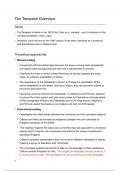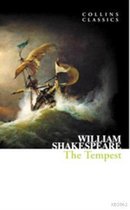Lecture notes
THE TEMPEST A Level English Lit Overview
Full collection of notes from an A* student. Covering genre, readings, a detailed examination of Act 1 and the subplot, contextual points, quotes and LOTS of critics (named and quoted), themes such as imprisonment, discussion of different productions such as Johnathan Miller's 1988 production, and ...
[Show more]




